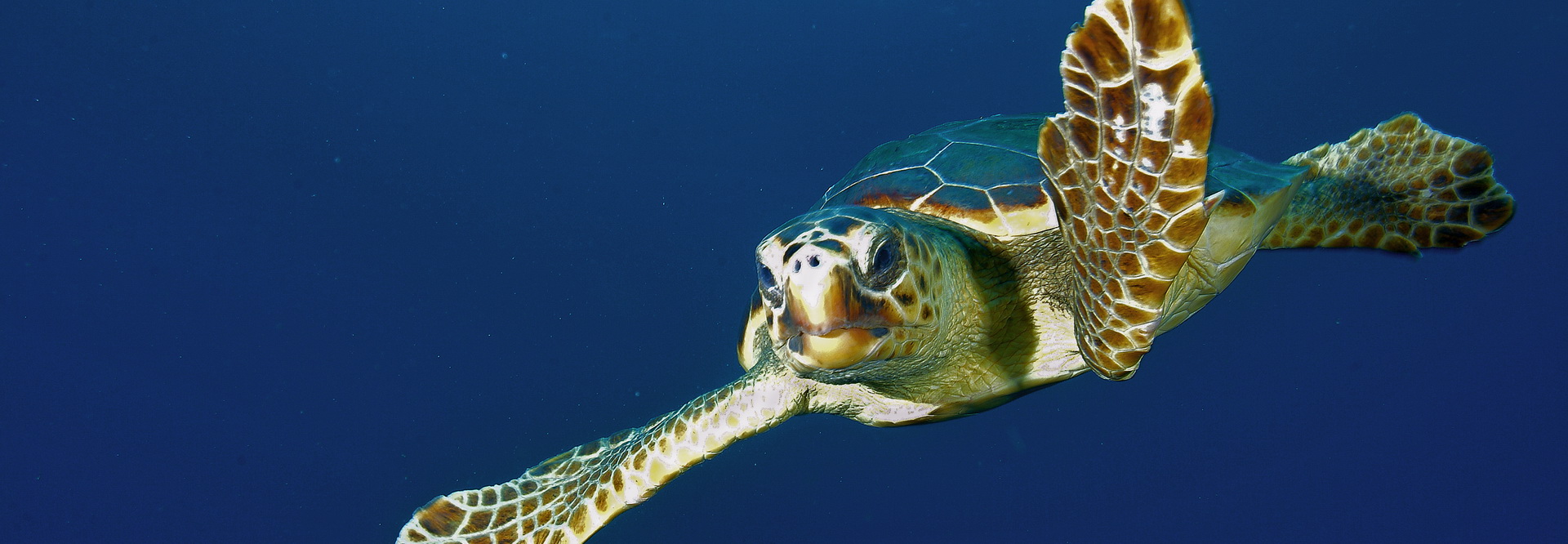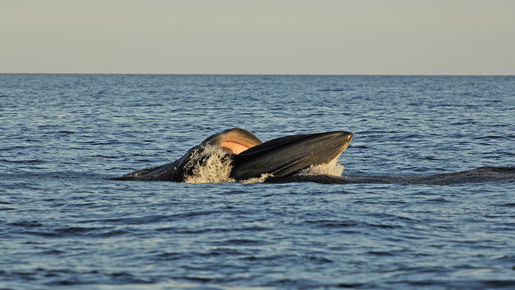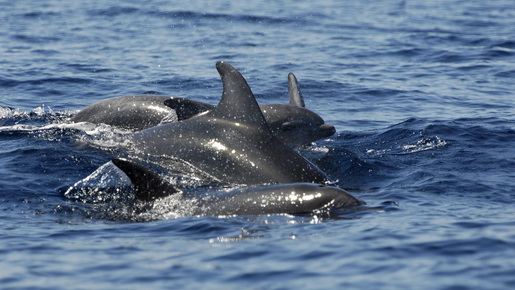Marine mammals and reptiles
The common turtle (Caretta caretta) lives in coastal areas, up to the edge of the continental shelf, and occasionally enters estuaries and brackish lagoons. During the breeding season it approaches the coast in search of beaches where to lay its eggs. It requires waters with temperatures above 10°C, with an optimum between 16 and 20°C. It is very long-lived and can exceed 50 years of age. Reproduction usually takes place every 2-3 years, in spring/summer, with 2-5 egg depositions at 2-week intervals. It is widely distributed in tropical and subtropical waters all over the world, in Atlantic, Pacific and Indian Ocean, Mediterranean Sea and Black Sea where it reproduces.
The bottlenose dolphin (Tursiops truncatus) The coastal community of this species is generally observed in shallow waters even less than 20 meters and can go up rivers for some km. The individuals associate in small groups unlike the pelagic form that is sighted in numerous herds formed also by hundreds of heads. Within the group there seem to be close social ties.
The common whale (Balenoptera physalus) The whale is a globally distributed cetacean, present in all the main oceans of the world. Seasonal migration is traditionally considered as a regular shift between supposed temperate spawning grounds and summer feeding grounds at high latitudes, in fact a much more complex set of factors influence the use of the habitat by these animals.
The bottlenose dolphin (Tursiops truncatus) The coastal community of this species is generally observed in shallow waters even less than 20 meters and can go up rivers for some km. The individuals associate in small groups unlike the pelagic form that is sighted in numerous herds formed also by hundreds of heads. Within the group there seem to be close social ties.
The common whale (Balenoptera physalus) The whale is a globally distributed cetacean, present in all the main oceans of the world. Seasonal migration is traditionally considered as a regular shift between supposed temperate spawning grounds and summer feeding grounds at high latitudes, in fact a much more complex set of factors influence the use of the habitat by these animals.




